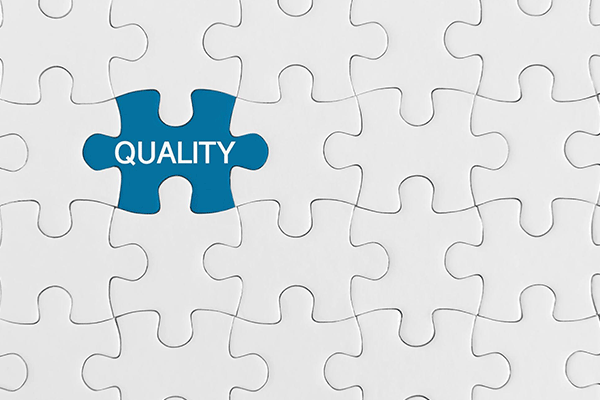In businesses, getting distracted and losing focus on what is essential is straightforward. This is particularly true when trying to implement a new management system to improve operational efficiency and enhance the quality of goods or services.
A quality manual is one such document that helps organisations remain focused, as it describes the policies and objectives of the Quality Management System (QMS).
Usually, when you think of QMS documentation, people envision lots of documents and unnecessary bureaucratic procedures.
This misconception is propagated because many companies go overboard during the documentation process and reiterate all the clauses of the ISO 9001 standard in the document.
Although the ISO 9001 standard requires different types of information to be documented, it is not necessary to document all the clauses within the standard.

One of the core recommendations of the standard is to remain flexible and only focus on documenting those requirements that are suitable to your organisation’s unique circumstances.
Essentially, it is recommended to include policies for all areas of the business that can affect your ability to deliver high-quality products, meet your customers’ expectations and adhere to ISO requirements.
The purpose of the quality manual is to help your department managers implement procedures within the specified boundaries of the QMS. The uses of the quality manual are as follows:
- To share the expectations of the management with the employees.
- To showcase the company’s plan to conform to the requirements of ISO 9001:2015.
- To showcase the fulfilment of clause 5.3 of the ISO 9001 standard, where organisational roles, responsibilities and authorities have been appropriately delegated and communicated across the organisation.
- To provide a touchstone of information about the quality procedures for internal, customer-affiliated and ISO certification body auditors.

Benefits of ISO 9001 quality manual
As mentioned above, the purpose of the quality manual is to ensure that the organisation remains focused on its quality objectives. This is done by describing the processes and activities required to implement the QMS.
Although it is true that the ISO 9001 standard no longer requires a quality manual as a non-negotiable or obligatory document, it remains an integral part of any modern QMS. In fact, in the documentation pyramid, it acquires the top hierarchical position along with quality policy statements.
The reality is that the quality manual is an essential part of the QMS as it allows organisations to document the critical part of their business, especially those areas exposed to the highest risk.
Many organisations mature with time, and quality manuals help operators in the process of refining by recognising the added value of the modifications. you can learn more on ISO 9001 internal audit.

The processes described in the quality manual ensure that your organisation can provide the services and products that continually meet customer requirements, deliver satisfaction, and meet the requirements of ISO 9001 and its targets.
The quality manual delineates the scope of the management system, including what the business does, expects and wants from its QMS. Moreover, the manual also contains an overview of employee responsibilities, helping to clear ambiguity regarding tasks.
In addition to presenting a concise overview of the system, the quality manual also provides a location for scope, policy and objectives, helping to create structure in the organisation’s documentation. you can learn more on ISO 9001 documentation.
Moreover, the quality manual is divided into procedures that help maintain the quality of certain aspects of the QMS, whereas the others focus on mitigating risks.
The quality assurance manual helps enhance the quality management processes of the QMS, thereby increasing its efficiency, effectiveness and sustainability. Whereas the quality control section of the quality manual helps ensure continuity of operations in adverse conditions and emergencies.

Guidelines for maintaining a quality manual
To develop a quality manual, organisations need to consider the following steps:
- Create a list of policies that need to be written, paying particular attention to ISO requirements.
- Drafting policies based upon the applicable ISO requirements.
- Listing all operational procedures or referencing them throughout the document as found appropriate.
- Determining the format and structure of the quality manual and drafting the first version.
- Circulating the drafted manual throughout the organisation to collect input from all the departments and address any inadequacies identified.
- After addressing inadequacies, attain formal approval and release the final version of the quality manual.
The contents of your quality manual are customised to your individual needs. However, it is helpful to remember that a quality manual is a place to document and show evidence of what you do.
Hence, be vigilant about including policies that reflect actual practices. Some of the common topics that should be included in quality manuals are:
- The scope of the QMS;
- The quality policy;
- An explanation of the organisation’s documentation structure;
- A detailed organisational chart;
- Policy statements for each applicable ISO requirement;
- A reference to operating procedures.








Users Comments
Get a
Quote